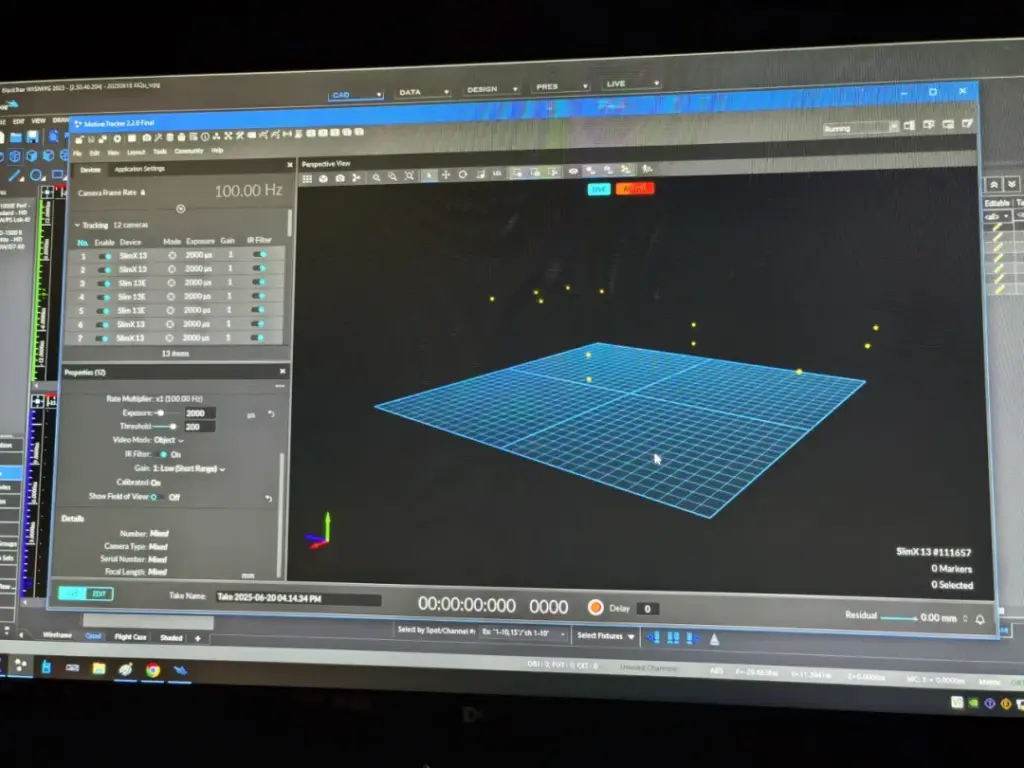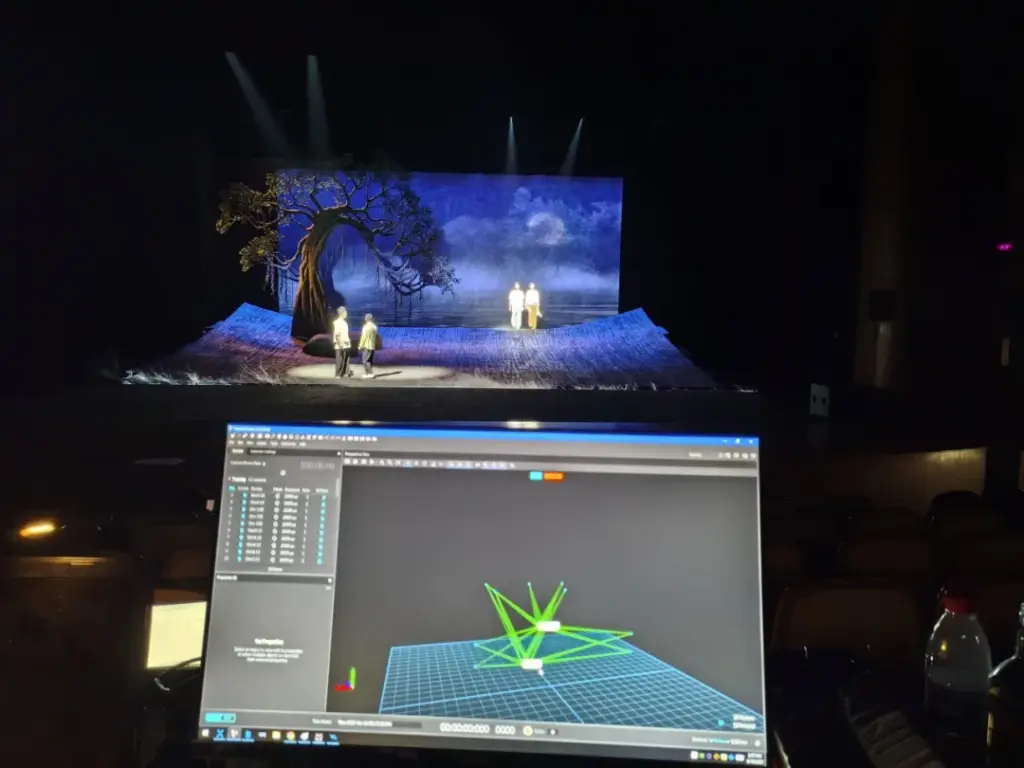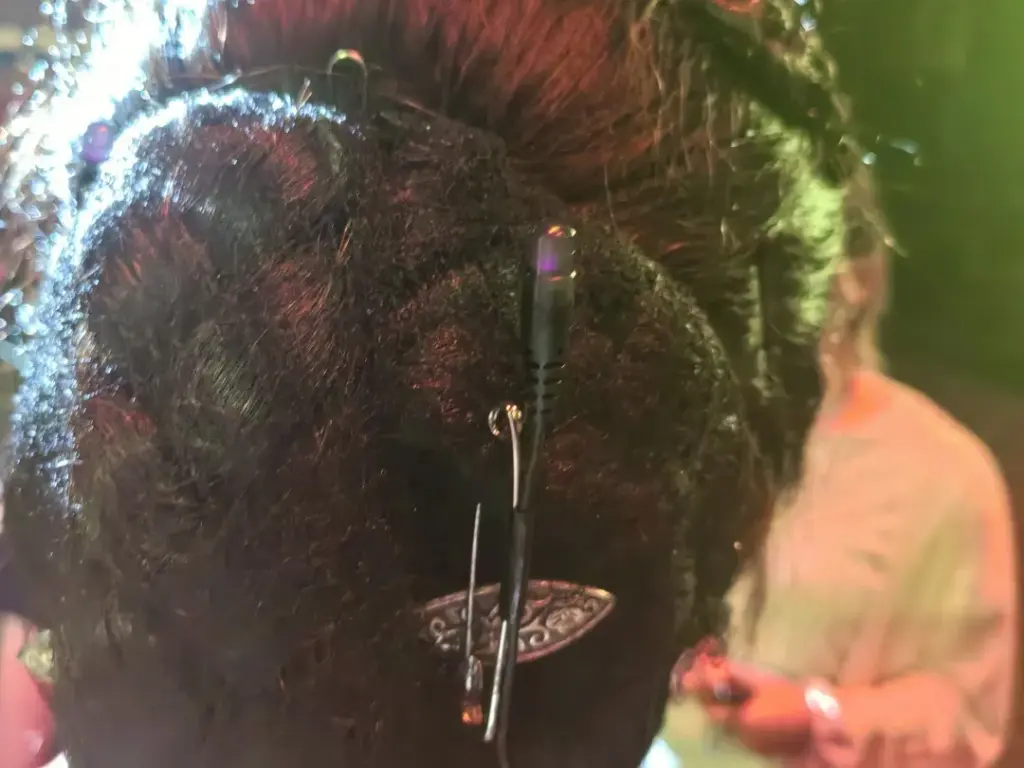In late June 2025, the graduation production of the first-ever Chao Opera undergraduate class at the National Academy of Chinese Theatre Arts, Qiaopi Song, made its stunning debut at the school’s Grand Theatre. Co-produced by the National Academy of Chinese Theatre Arts and the Guangdong Chao Opera Theatre, with support from the Beijing Chao Chamber of Commerce, Beijing Jingchao Charity Foundation, and Beijing National Academy of Chinese Theatre Arts Education Foundation, this production brings the cultural memory of “Qiaopi” to the Chao Opera stage for the first time. The work weaves grand historical storytelling with distinct cultural elements like Chaoshan folk songs and dialect expressions, vividly portraying the patriotism and family ties of the overseas Chinese community.
Behind the on-stage visuals, CAST’s BlackTrax tracking system worked quietly in the background shaping a precise, flexible space for artistic expression.
Accurate Tracking in a Complex Stage Environment
The stage design of Qiaopi Song was intricately layered, featuring hanging gauze curtains, suspended props, sloped platforms, and interwoven elements like trees and ship anchors. Actors in light-coloured traditional costumes added another challenge: concealing tracking equipment without disrupting the aesthetic.
Wang Xiangfei, BlackTrax technical engineer from Huahui, explained: “This production pushed the BlackTrax system in a complex environment – sensors had to avoid curtains, props, and layered set structures. Infrared beacons on the actors had to be completely hidden. With tight coordination between the lighting, costume, and hairstyling teams, we secured the infrared cables discreetly on the actors’ heads and shoulders, ensuring they stayed invisible and moved naturally with the performers.”
Wang also emphasized: “This project was a top priority for the academy, with senior leaders present on-site providing guidance. Zhang Gongchang, one of the teachers oversaw every artistic detail, from beacon placement to lighting prediction values and offsets. Everything was fine-tuned, putting exceptionally high demands on the system’s stability and precision.”
The beacons worn by the actors were compact and easily integrated into the performance. Each beacon has a unique ID and supports multi-beacon coordination. In this production, five lead actors wore dedicated beacons, with three additional units as backups.
BlackTrax simultaneously controled 44 fixtures on site.

The system used 12 sensors to create a 3D tracking network:
5 sensors installed on the stage lighting trusses (above the actors’ heads)
4 sensors in the false proscenium area
3 sensors along the edge of the second-floor audience seating
This setup created a dead-zone-free tracking system. Even under intense light from dozens of stage fixtures, tracking remained stable and reliable.

Wang highlighted the system’s core strengths: “BlackTrax’s position prediction, dynamic offset compensation, and horizontal/vertical anti-shake features were essential for this production. Crucially, BlackTrax only handles fixture positioning – brightness, colour, and patterns stay under the lighting console’s control. Both systems run in parallel, perfectly synchronized. That seamless coordination is what makes BlackTrax stand out.”
